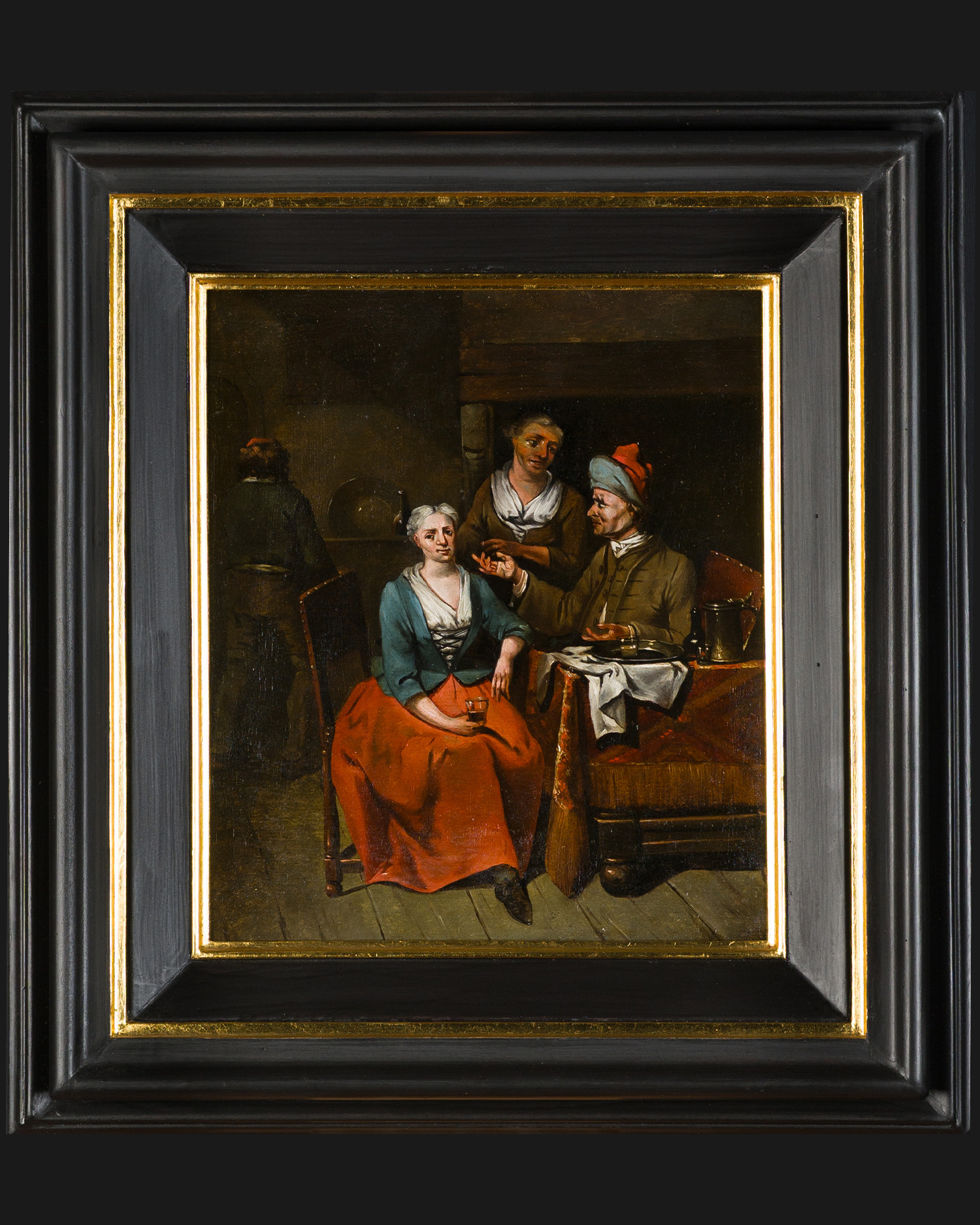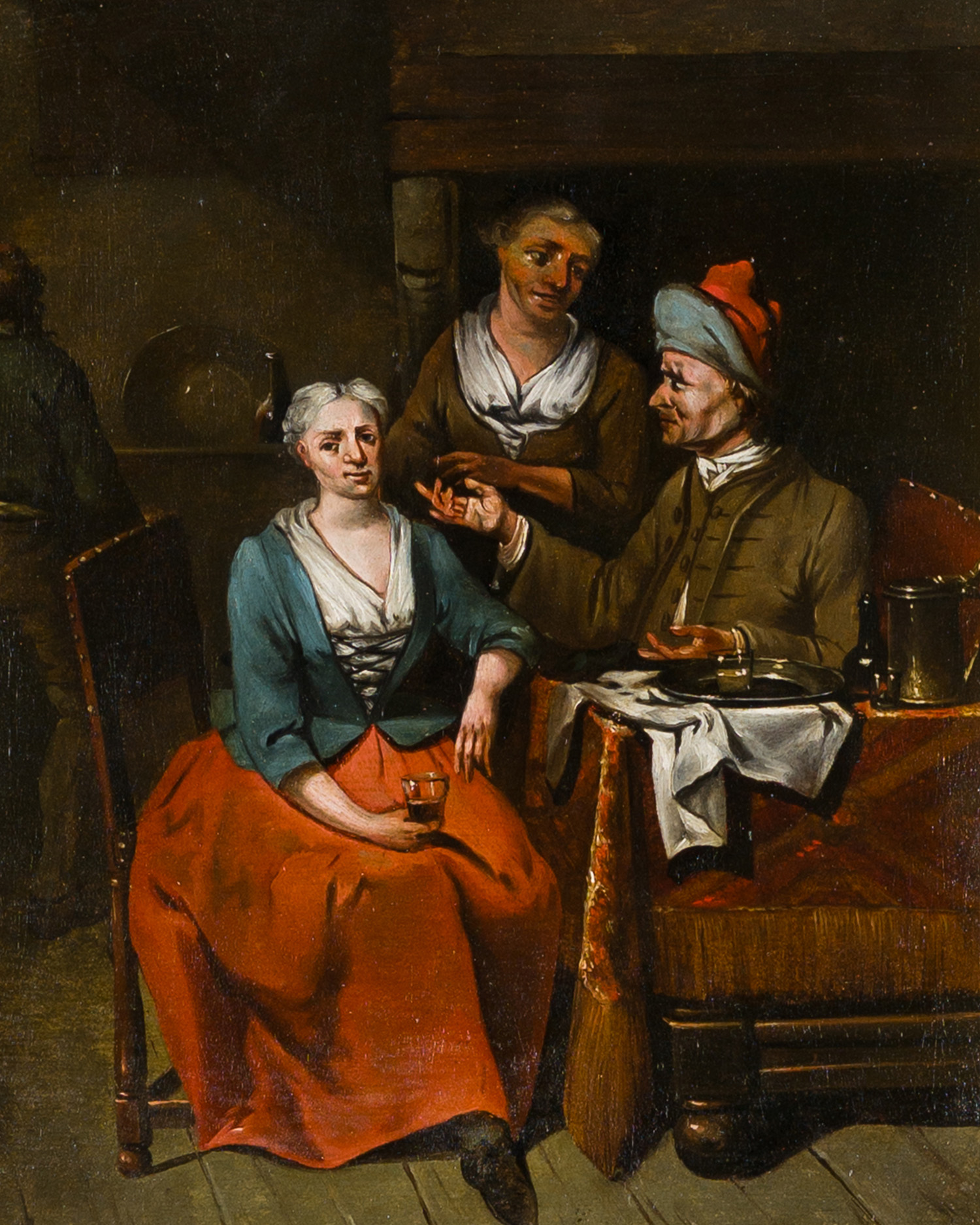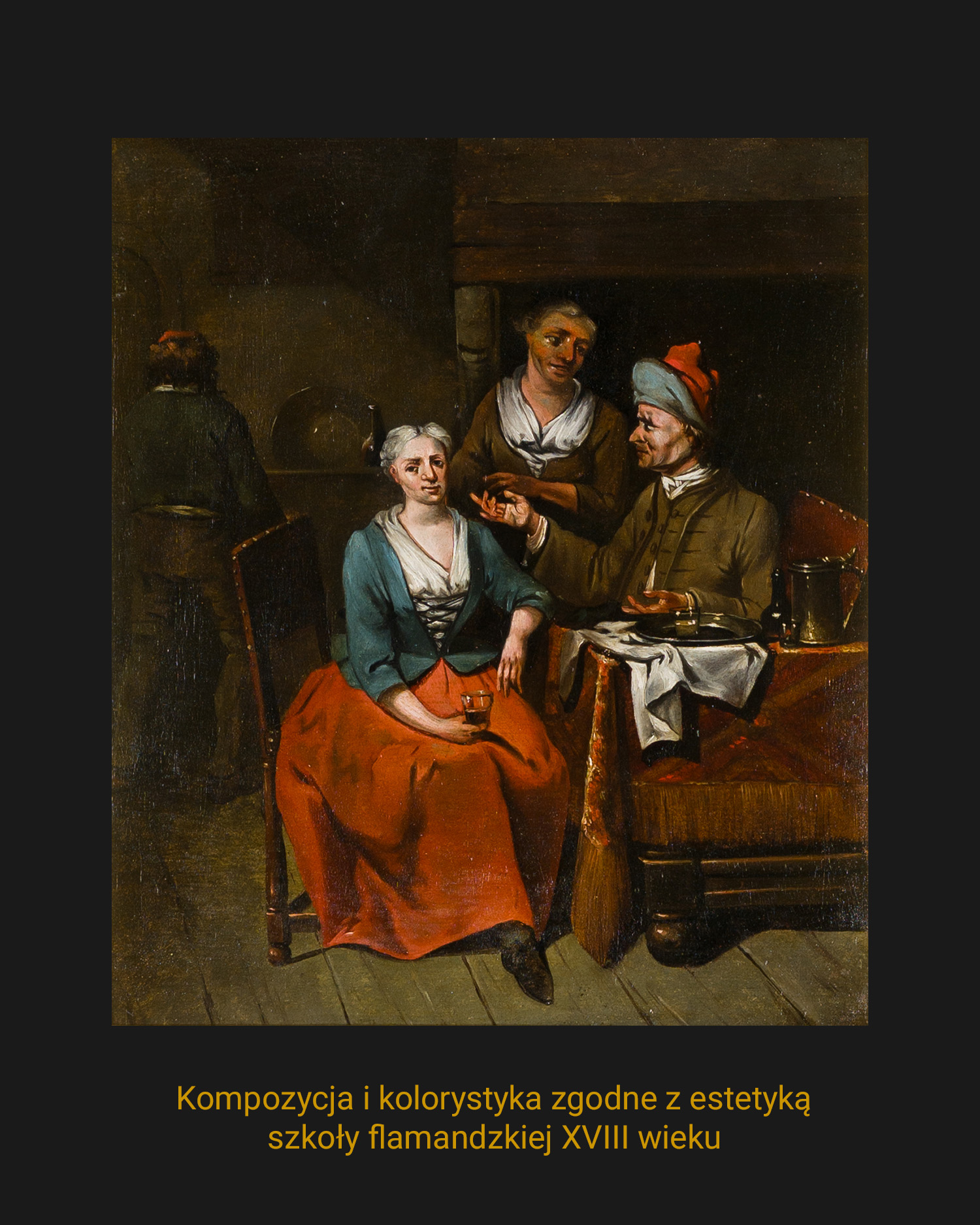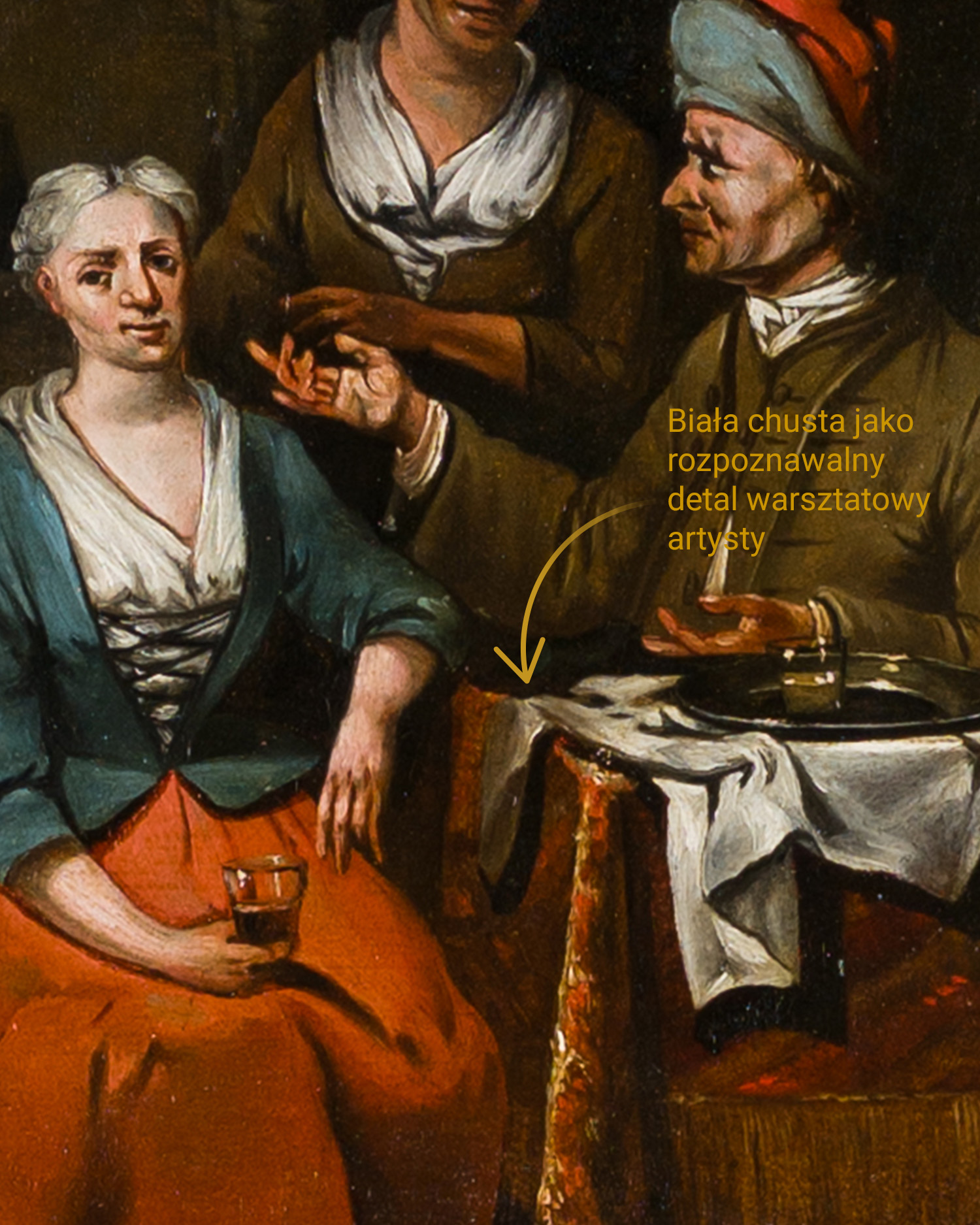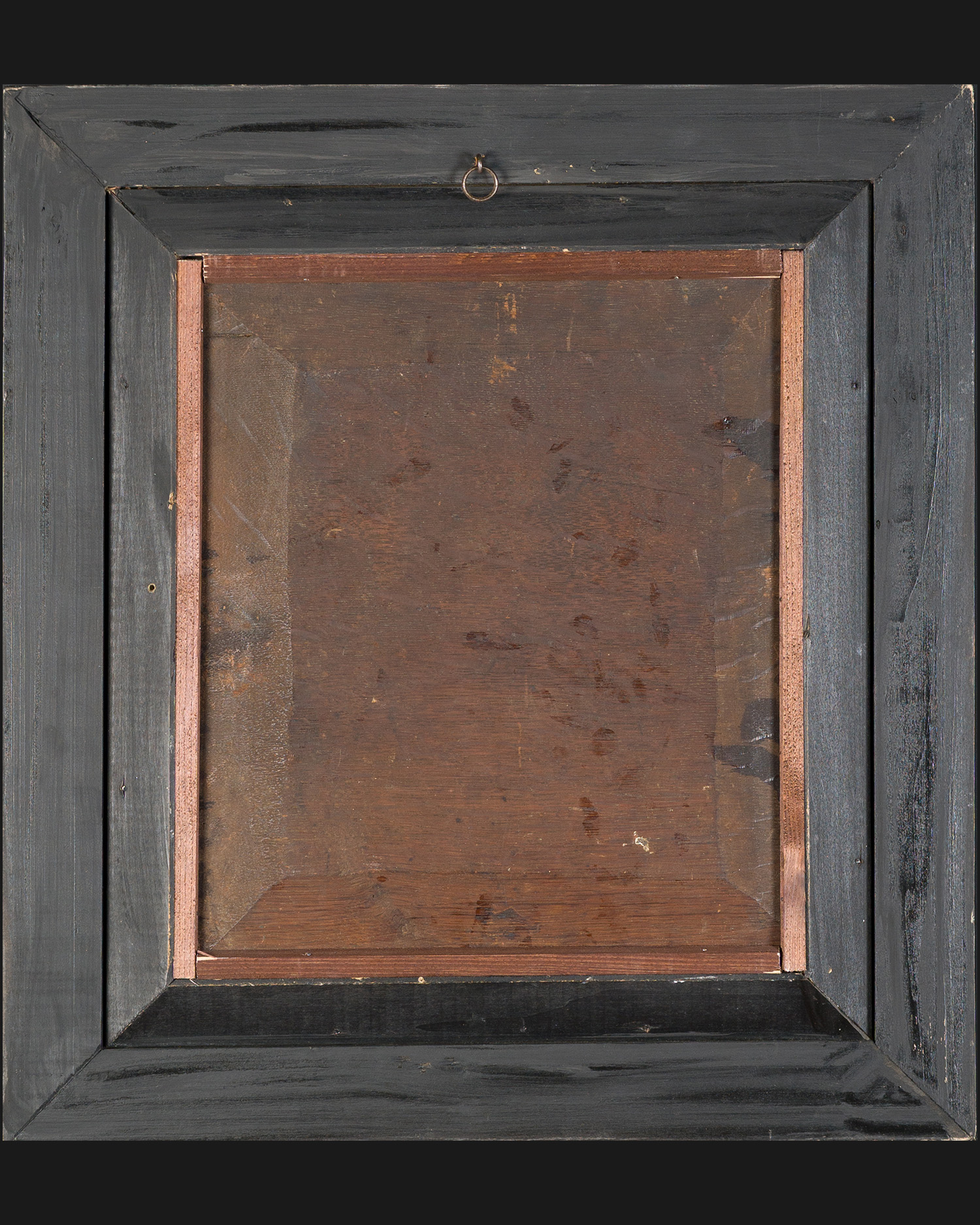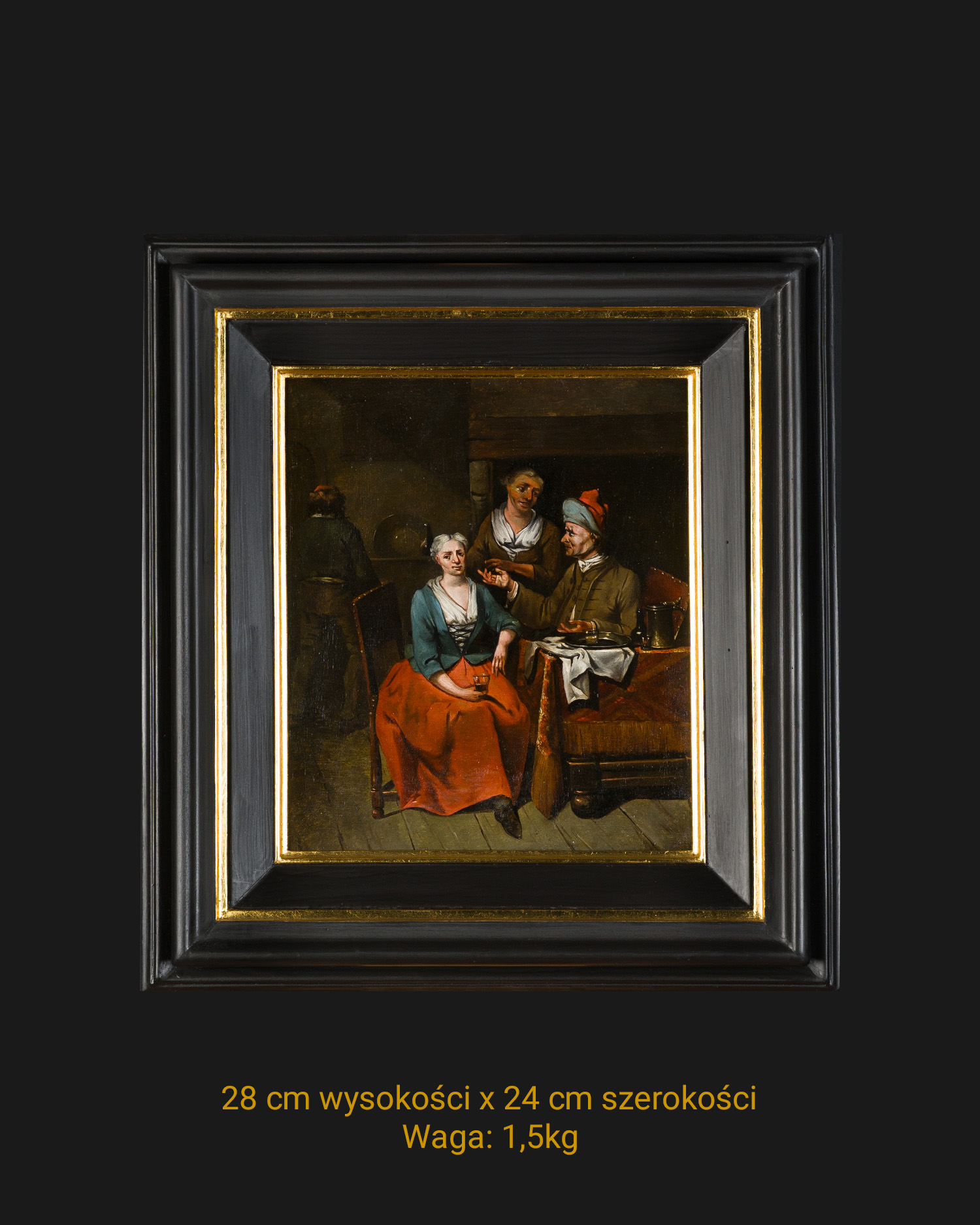Jan Baptist Lambrechts, Genre scene in an inn, 28 x 24 cm, ca. mid-18th century
875,00 €
An intimate genre scene, attributed to Flemish painter John Baptist Lambrechts. The center of the depiction is formed by three figures: a woman in a red skirt and green kaftan with a distinctive white scarf around her neck, a man in a red cap and a woman standing behind, who participates in the conversation. Next to her stands a set table, covered with a colorful cloth, on which the white shawl – a hallmark of inn scenes by Lambrechts – could not be missing. A gesticulating man addresses a woman who, with a glass in her hand, looks calmly at the viewer. On her shoulders is a white shawl tied over her breasts: an element characteristic of Lambrechts’ painting, present in almost all his depictions of women.
The painting betrays the characteristics of a good painter’s workshop such as skillfully developed chiaroscuro, the way of depicting the details of fabrics and tableware attest to the artist’s technical maturity. The composition is static, but full of subtle emotional tensions.
1 in stock
Symbolism
Image depicts an emotional dialogue between a man and a woman sitting at a table. Gestures, facial expressions and hand arrangements were developed with great precision. Thanks to narrative approach The viewer gets the impression of participating in a conversation. Genre scene is full of moral allusions, legible to the 18th-century bourgeoisie. Only some of the works Lambrechtsa is signed with initials, placed on vessels or textiles. Those unsigned, or those on which the signature has not survived, can be identified by the manner of painting and the presence of characteristic motifs, such as white shawl or clamshell.
Historical context
Genre Scenes w Flemish painting of the 18th century served not only a decorative function, but also a narrative and moralizing one. By depicting everyday situations - such as feasts, discussions or flirtations - they were able to convey various social and moral messages. Lambrechts, continuing the tradition of Teniers II i van Ostade, consciously reduced the momentum of group scenes in favor of more intimate, psychological compositions. As a result, his works were perfectly suited to the tastes of the bourgeois middle class, being an ironic reflection of its lifestyle and social aspirations.


Collector's value
Well-preserved Flemish paintings of this period is of enduring interest on the art market. The painting attributed to Lambrechts has many characteristics of his style - characteristic chiaroscuro, white fabric on the table or the typical arrangement of figures. This type of work is particularly appreciated by collectors interested in Baroque painting, the quintessence of which was genre scenes, especially those in inn interiors.
Artistic qualities
Work made laser technique on the boardwith attention to detail and tones of light. Attention is drawn to the realistically rendered wood texture, precise folds of fabric As well as the subtle play of glances between the characters. Thanks to warm and atmospheric composition the painting will be a graceful decorative element in various arrangements.
Image will perfectly suit classical interiors, rustic, hotel or historicizing. It will look great on museum exhibitions and in galleries, as well as a teaching material for the analysis of bourgeois art i genre scenes. It can be a valuable part of a larger collection of of Flemish paintings or serve as a thematic decoration in restaurants styled as taverns or inns.
Curiosity
In many of the works attributed to Lambrechts subtle sound motifs, suggested by the character's distinctive gestures or mouth positioning. In this stage The man's facial expressions and the arrangement of his hands clearly indicate that he has something, in his opinion, important to convey, which the woman sitting next to him is moderately interested in. His statement, however, elicited a reaction from the woman shown in the background. This type of silent "conversation" was a conscious effort by the artist, who wanted the viewer to step into the role of eavesdropper and participant in an intimate story.

| Weight | 1,5 kg |
|---|---|
| Dimensions | 28 × 24 cm |
| Type |
Collector's image |
| Form |
Genre scene |
| Materiał |
Board ,Oil paints |
| Kolorystyka |
Earthy palette ,White |
| Technika |
Oil |
| Czas powstania |
18th century (1701-1800) |
| Era |
Late Baroque |
| Kraj pochodzenia |
Flanders |
| Autor |
Attributed to John Baptist Lambrechts |

